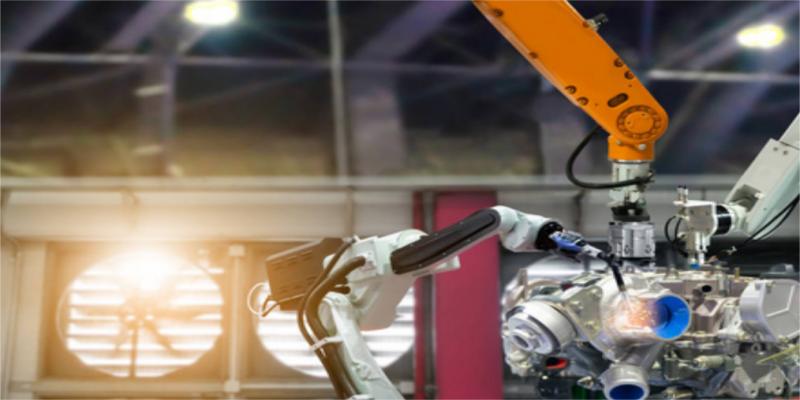For small and medium-sized enterprises that are currently in the process of transformation and upgrading, enterprises are moving towards the layout of automated production. However, for some small and medium-sized enterprises, the price of new industrial robots is too high, and the financial pressure on these enterprises is too great. Many companies are not as well-funded and strong as large companies. Many small and medium-sized enterprises only need a few or one industrial robot, and with the soaring wages, second-hand industrial robots will be a good choice for them. Second-hand industrial robots can not only fill the gap of new industrial robots, but also directly reduce the price to half or even lower, which can help small and medium-sized enterprises to complete industrial upgrading.
Second-hand industrial robots are usually composed of robot bodies and end effectors. In the application process of second-hand industrial robots, the robot body is usually selected to meet the use conditions, and the end effector is customized for different use industries and environments.
For the selection of the robot body, the main selection parameters are application scenarios, degrees of freedom, repeat positioning accuracy, payload, working radius and body weight.
01
Payload
Payload is the maximum load that the robot can carry in its workspace. It ranges from 3Kg to 1300Kg, for example.
If you want the robot to move the target workpiece from one station to another, you need to pay attention to adding the weight of the workpiece and the weight of the robot gripper to its workload.
Another special thing to pay attention to is the robot’s load curve. The actual load capacity will be different at different distances in the space range.
02
Industrial robot application industry
Where your robot will be used is the first condition when you choose the type of robot you need to buy.
If you just want a compact pick and place robot, the scara robot is a good choice. If you want to place small items quickly, the Delta robot is the best choice. If you want the robot to work next to the worker, you should choose a collaborative robot.
03
Maximum range of motion
When evaluating the target application, you should understand the maximum distance the robot needs to reach. Choosing a robot is not just based on its payload – it also needs to consider the exact distance it reaches.
Each company will provide a range of motion diagram for the corresponding robot, which can be used to determine whether the robot is suitable for a specific application. The horizontal range of motion of the robot, pay attention to the non-working area near and behind the robot.
The maximum vertical height of the robot is measured from the lowest point the robot can reach (usually below the robot base) to the maximum height the wrist can reach (Y). The maximum horizontal reach is the distance from the center of the robot base to the center of the furthest point the wrist can reach horizontally (X).
04
Operation speed
This parameter is closely related to each user. In fact, it depends on the cycle time required to complete the operation. The specification sheet lists the maximum speed of the robot model, but we should know that the actual operating speed will be between 0 and the maximum speed, considering the acceleration and deceleration from one point to another.
The unit of this parameter is usually degrees per second. Some robot manufacturers also indicate the maximum acceleration of the robot.
05
Protection level
This also depends on the protection level required for the application of the robot. Robots working with food-related products, laboratory instruments, medical instruments or in flammable environments require different protection levels.
This is an international standard, and it is necessary to distinguish the protection level required for the actual application, or choose according to local regulations. Some manufacturers provide different protection levels for the same model of robot depending on the environment in which the robot works.
06
Degrees of freedom (number of axes)
The number of axes in a robot determines its degrees of freedom. If you are only doing simple applications, such as picking and placing parts between conveyors, a 4-axis robot is sufficient. If the robot needs to work in a small space and the robot arm needs to twist and turn, a 6-axis or 7-axis robot is the best choice.
The number of axes usually depends on the specific application. It should be noted that more axes are not just for flexibility.
In fact, if you want to use the robot for other applications, you may need more axes. However, there are disadvantages to having more axes. If you only need 4 axes of a 6-axis robot, you still have to program the remaining 2 axes.
07
Repeat positioning accuracy
The choice of this parameter also depends on the application. Repeatability is the accuracy/difference of the robot reaching the same position after completing each cycle. Generally speaking, the robot can achieve an accuracy of less than 0.5mm or even higher.
For example, if the robot is used to manufacture circuit boards, you need a robot with ultra-high repeatability. If the application does not require high precision, the robot’s repeatability may not be that high. Precision is usually expressed as “±” in 2D views. In fact, since the robot is not linear, it can be anywhere within the tolerance radius.
08 After-sales and service
It is important to choose a suitable second-hand industrial robot. At the same time, the use of industrial robots and subsequent maintenance are also very important issues. The use of second-hand industrial robots is not just a simple purchase of a robot, but requires the provision of system solutions and a series of services such as robot operation training, robot maintenance, and repair. If the supplier you choose can neither provide a warranty plan nor technical support, then the robot you buy will most likely be idle.
Post time: Jul-16-2024







